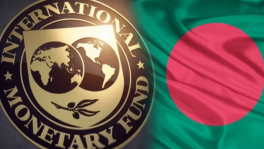‘Bangladesh should negotiate that any prospective agreement is on the basis of less than full reciprocity’

The Business Standard spoke to Professor Mustafizur Rahman, distinguished fellow of the Centre for Policy Dialogue, to discuss what Bangladesh can expect out of this tour.
From an economic perspective, how do you look at the Prime Minister's India visit?
We do have a longstanding, wide-ranging and multi-dimensional relationship with India. The bilateral ties are important from geostrategic and geopolitical perspectives, not to speak of the growing ascendancy of economic substance of this relationship.
I think that there are a lot of untapped opportunities which remain to be realised through concrete initiatives. A wide spectrum of measures has been put in place over the past years that cover trade in goods, services and energy and areas of investment and multimodal connectivity including road, rail and water connectivities.
India has offered Bangladesh duty-free, quota-free market access back in 2011; BBIN Motor Vehicle Agreement has been signed; coastal shipping agreement has been inked. The two countries have gone beyond traditional areas – Bangladesh is importing electricity from India and exporting spectrum. To attract investment from India, Bangladesh has offered two dedicated Special Economic Zones. From a forward-looking point of view, the visit is important to take these measures to the next step by developing a comprehensive bilateral economic partnership.
When this government came to power, the trade was less than half a billion. We are now exporting products worth about $2 billion which would mean that in about a decade our export has increased four times. However, I don't think we are being able to take full advantage of the preferential market access.
India imported products worth $495 billion from the global market in FY 2021-22. Bangladesh's share in the growing Indian market is rather insignificant. If we are able to strengthen our supply side capacities and raise competitiveness, we have a lot of opportunities to expand and diversify our exports to India, in agro-processed commodities, home textiles, leather and footwear, light engineering products and others. To realise the potential opportunities, triangulation of trade, transport and investment will be critically important.
The potential benefits that different modelling indicates can only be realised on the ground if we are able to do the needful work through our own homework and through discussions and negotiations. The visit is an opportunity to take this relationship to a new level, to realise the potential opportunities, in a win-win manner.
What are some of the concerns that need to be addressed in terms of Bangladesh-India bilateral relationship? Has Bangladesh been successful in implementing projects with India's LoC (Line of Credit)?
We do have our concerns no doubt, but we should not overplay this. I think Bangladesh's relationship with India is mutually rewarding. If there is goodwill on both sides, attendant concerns can be addressed. Trade facilitation remains a concern. Anti-dumping duties imposed on our jute exporters remain a concern. It is true that the Exim Bank of India has its own conditions for releasing funds which is creating some difficulties. We have concerns as regards also the minimum procurement requirements. We need to resolve these issues through discussions. But we will also have to do the needful on our part.
India's first Line of Credit was put into operation in 2010. We have not been able to take advantage of the three LoCs and implement the projects which we have identified and prioritised ourselves. Repayment of loans in some cases are scheduled to start before the projects have even been implemented.
You mentioned doing the needful on our part. Can you explain what you mean by that?
Let me give an example. We were to build an International River Port in Ashuganj and also build the four-lane link road from Ashuganj to Tripura. However, we could not operationalise this route, which had a significant potential to take a large part of the transport business between western and eastern India. Only a few government consignments have used the route; the private sector of India could not take advantage of this because of lack of the needed infrastructure.
The BBIN Motor Vehicle Agreement was signed in 2015. The Standard Operating Procedures have also been finalised. What happened to operationalising the MVA over these last seven years? In the 21st century, speed of action is important. Many potential benefits are remaining unrealised because of our slow pace of implementation.
India's zero-tariff trade facility will be there till 2026 - till the time Bangladesh graduates out of the LDC group. We are getting this preferential access on the basis of non-reciprocity. Beyond this timeline, in the context of CEPA, the relationship will have to be built on the basis of some degree of reciprocity. Bangladesh should negotiate that any prospective agreement is on the basis of less than full reciprocity. Bangladesh has major revenue loss concerns. The relative strengths of the two economies should inform the nature of the relationship, and this should guide the compliance, obligations, reforms and trade liberalisation plans as part of such an agreement.
We need to go for a mutual recognition agreement with India. To be able to do this, we will need to strengthen the capacity of our relevant accreditation and certification institutions. Initiatives will need to be taken to put in place integrated customs systems with single window, standardisation of customs clearance, introduce green channel and interoperability of the systems at customs points. The MVA should be an integral part of cross border multi-modal connectivity.
How can Bangladesh increase FDI from India?
I think it is possible to identify win-win solutions through our own homework and through negotiations. We will need to improve our investment environment, attract FDI and incentivise our private sector to create supply-side capacities in view of Indian market demand and raise our competitiveness to be able to export more to the Indian market.
In our Seventh Five-Year plan, by 2020, the target of net FDI was set at $9 billion. Actual investment turned out to be less than $2 billion. The reasons are weak infrastructure, unfriendly business environment, high cost of doing business, lack of gas supply and quality electricity. The One Stop Service Act's various provisions will need to be implemented as soon as possible. SEZ will give investors access to unencumbered land, but what about common services? We will have to act fast to be able to attract Indian investors to the SEZs.
Indeed, we will need to attract investment from India, targeting the Indian market which is able to take advantage of zero-tariff market access in India.
The Prime Minister's visit is taking place at a time when the world is reeling under the high inflationary pressure in the backdrop of the Russia-Ukraine war. In this context, if we can deepen the relationship with India, it will allow Bangladesh to expand her options – for example, in areas of food security in times of global food shortage. We will have to identify where our offensive interests and our defensive interests are, design our offer list and our request list and then go for negotiations.
As they say, in negotiations, countries get not what they deserve but what they negotiate. We should be well prepared in view of our discussions with India.


 Keep updated, follow The Business Standard's Google news channel
Keep updated, follow The Business Standard's Google news channel













